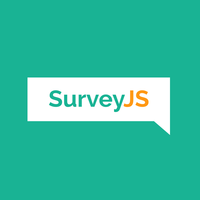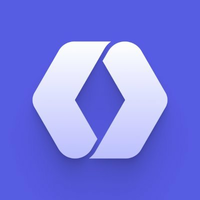Our great sponsors
-
jsonvisio.com
Discontinued 🔮 Seamlessly visualize your JSON data instantly into graphs; paste, import or fetch! [Moved to: https://github.com/AykutSarac/jsoncrack.com]
-
SurveyJS
Open-Source JSON Form Builder to Create Dynamic Forms Right in Your App. With SurveyJS form UI libraries, you can build and style forms in a fully-integrated drag & drop form builder, render them in your JS app, and store form submission data in any backend, inc. PHP, ASP.NET Core, and Node.js.

-
InfluxDB
Power Real-Time Data Analytics at Scale. Get real-time insights from all types of time series data with InfluxDB. Ingest, query, and analyze billions of data points in real-time with unbounded cardinality.

-
kubernetes-network-policy-recipes
Example recipes for Kubernetes Network Policies that you can just copy paste
-
rbac-tool
Rapid7 | insightCloudSec | Kubernetes RBAC Power Toys - Visualize, Analyze, Generate & Query
-
permission-manager
Permission Manager is a project that brings sanity to Kubernetes RBAC and Users management, Web UI FTW
-
lens-resource-map-extension
Lens - The Kubernetes IDE extension that displays Kubernetes resources and their relations as a force graph.
-
mermaid
Generation of diagrams like flowcharts or sequence diagrams from text in a similar manner as markdown
-
WorkOS
The modern identity platform for B2B SaaS. The APIs are flexible and easy-to-use, supporting authentication, user identity, and complex enterprise features like SSO and SCIM provisioning.

JSON Visio is a tool that generates graph diagrams from JSON objects. These diagrams are much easier to navigate than the textual format and to make it even more convenient, the tool also allows you to search the nodes. Additionally, the generated diagrams can also be downloaded as image.
Finally, if you're more into visual tools, then you might find Meld useful as it provides similar experience to JetBrains' products.
To avoid spending unreasonable amount of time trying to find that one wrong indent, I recommend you use schema validation and let your IDE do all the work. You can use validation schemas from https://schemastore.org/json or custom schemas such as these for Kubernetes to validate your files. These will work both with JetBrains products (e.g. Pycharm, IntelliJ) as well as VSCode (see this guide)
As usual, there's also CLI based tool which provides more capabilities than the bare kubectl. It's called k9s and definitely does make it easier to navigate, observe and manage your deployed applications in Kubernetes:
On top of the above-mentioned tools, it's also a good idea to use YAML linter such this one or its CLI equivalent, which will validate and cleanup your documents.
Finally, if you're working with OpenAPI/Swagger YAML specs, then you can use https://editor.swagger.io/ to view/validate/edit you schemas.
Difftastic
Lazydocker is a great tool for dealing with multiple Docker containers at the same time. If you don't believe me, then check out the "elevator pitch" in the project's repository.
I'd recommend using this collection of network policy recipes to test out these 2 tools and see how they can be helpful to your workflow.
Krane is a tool that can generate graph showing relationships between all roles and subjects. Krane also has many more features, including RBAC risk assessment, reporting and alerting, as well as querying/interrogating RBAC rules with CypherQL.
A simpler alternative to Krane is rbac-tool, which can be installed as kubectl plugin. It can also analyze, audit, interrogate RBAC rules, but most importantly, it can visualize them:
Finally, if you're more concerned with easily configuring RBAC rather than viewing pretty diagrams, then Permission manager is a tool for you. See GIFs in GitHub repository for demonstration of what the tool can do.
Lens - the Kubernetes IDE which brings some sanity into managing clusters, especially when paired with Lens Resource Map which displays Kubernetes resources and their relations as a real-time force-directed graph.
Lens - the Kubernetes IDE which brings some sanity into managing clusters, especially when paired with Lens Resource Map which displays Kubernetes resources and their relations as a real-time force-directed graph.
This article focused on developer/DevOps tooling, but there are 2 more things - honorable mentions - that deserve a shout-out. First being Mermaid.js for creating beautiful diagrams (as a code), which is now integrated with GitHub markdown. The other one - MathJax - for visualizing mathematical expressions, as of recent also supported by GitHub markdown.